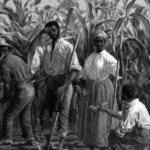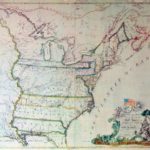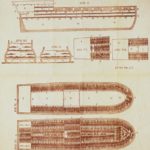Explore the text and history of the Three-Fifths Clause, the Migration and Importation of Slaves or Slave Trade Clause, and the Fugitive Slave Clause.
Slavery and the Three-Fifths Compromise

This short video explains the role played by slavery in counting population for taxation and representation. Drawing upon an unsuccessful 1783 amendment to the Articles, James Madison suggested that the slave population be counted at 60% for both representation and taxation. Professor John Kaminski explains how this “federal ratio” reconciled Southerners (who wanted slaves counted as people for representation) and Northerners (who wanted slaves counted as property in determining taxation.)
Constitutional Index – Three-fifths Clause
The Constitutional Index breaks down the U.S. Constitution by Section, Amendment, and Clause and contains broader topics and themes. These are used to cross-reference Library resources in an effort to annotate constitutional history.
The Constitutional Convention
In this lesson, students will use C-SPAN video clips to examine the founding principles that emerged from the Constitutional Convention as well as hear about some of the people who participated. Students will use this information to analyze the role the compromise played in the creation of the Constitution.
The Constitutional Convention: Slavery and the Constitution
History is the chronicle of choices made by actors/agents/protagonists in specific contexts. This simulation places students at the Constitutional Convention and asks them to engage in the most problematic issue the framers faced: how to deal with slavery. Although most delegates believed slavery was deplorable, it was so deeply entrenched that any attempt to abolish it would likely keep several states from approving the proposed Constitution. By confronting this issue, students will experience for themselves the influence of socioeconomic factors in the political arena, and they will see how political discourse is shaped by arguments based on morality, interest, and pragmatic considerations, often intertwined.
States, Slavery, and the Constitution

This short video assesses sectional differences at the Convention about slavery. New England delegates saw slavery as a moral issue beyond the scope of their deliberations; representatives from the Middle States were generally opposed to slavery on moral and economic grounds; and Southerners were insistent on protection for both slavery and the slave trade. Professor John Kaminski analyzes how the conflict was resolved by denying Congress any power to regulate the trade until 1808.
The Slave Trade and the Constitution

This short video examines changing attitudes towards the slave trade in the late 18th century. As early as 1763, there were strong voices in favor of the abolition of international slave trading. At the Constitutional Convention, states from the Deep South refused to support the Constitution without some protection for the slave trade. Professor John Kaminksi describes the convention’s decision to allow congressional action on slavery after 1808 as “the beginning of the end.”